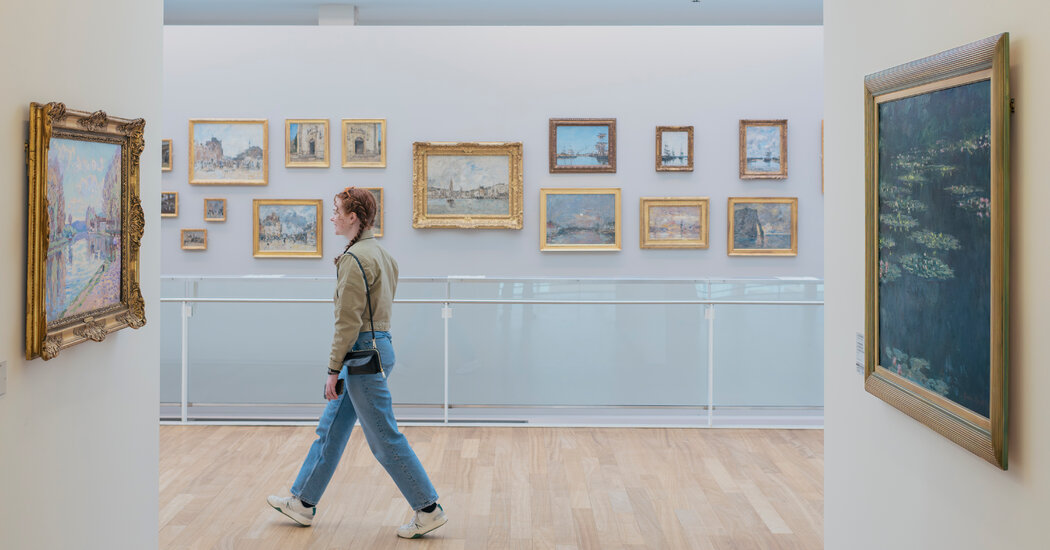As the fog of dawn lifted one morning in mid-November 1872, Claude Monet looked out the window of his hotel room in the French city of Le Havre and furiously painted his vision of its industrial harbor. He flung his brush with quick strokes and played with the water, stretching it with rays of color.
In one sitting, he created “Impression, Sunrise,” a painting of a vivid orange sun with its reflection shimmering in the sea.
In 1874, Monet, who grew up in Le Havre on the Normandy coast, included the painting in an exhibition of 30 artists’ work organized in response to the Paris Salon, an annual showcase of academic art. The critic Louis Leroy denounced “The Exhibition of the Impressionists” and mocked the title of Monet’s painting. “An impression, I’m sure,” he wrote. “I thought to myself, this has made an impression on me so there must be impressions somewhere in there.”
This year, France is celebrating the 150th anniversary of the movement. In Paris, the Musée d’Orsay is exhibiting 130 works from and related to the 1874 exhibition and offering a one-hour immersive tour with virtual reality headsets. It is sending 178 other works to more than 30 museums throughout France.
The Musée Marmottan, which owns “Impression, Sunrise,” has agreed to lend it to the Orsay until July for its exhibition “Paris 1874: Inventing Impressionism” and to the National Gallery in Washington where the exhibition travels in September.
But to discover a fresh and unexpected view of Impressionism requires a visit to Le Havre, France’s most important seaport and its most underappreciated big city.
Snubbed by tourists
Once there was a direct New York-to-Le Havre route on the French Line, whose luxury cruise liners pampered rich Americans with fancy suites and fine French cuisine. Le Havre was their first point of entry into the Old World.
But in more recent times, cruises and tour operators preferred to take their passengers to the Normandy beaches and to charming, quaint Honfleur on the other side of the Seine estuary, rather than to gritty Le Havre. Even today, many Parisians have never visited.
“It used to be that people who came from Le Havre rarely admitted it,” said Édouard Philippe, the mayor of Le Havre and a former French prime minister, in an interview. “People made fun of them. A bit like how people from New Jersey got used to being made fun of because they lived on industrial land that was less beautiful than New York. That all…
Click Here to Read the Full Original Article at NYT > Travel…
